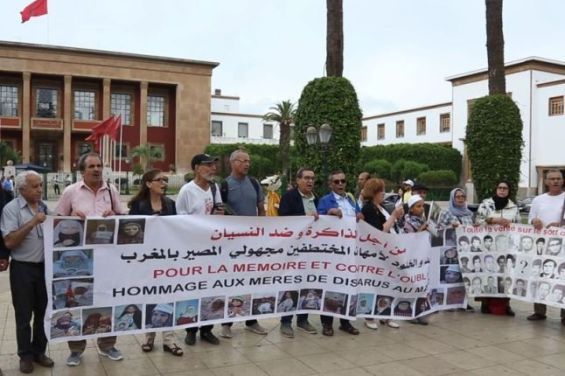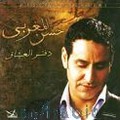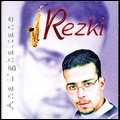Your research highlights the role of women in constructing this alternative history. Could you elaborate on the specific contributions of women in this process?
Moroccan women have played an important role in the history of the «Years of Lead». They were real partners in shaping and fashioning the history of this period as both victims and actors. As victims, many women experienced arbitrary detention and its ordeals. Although light has been shed on those who were able to write their memoirs, many rural and working-class women have not been able to access the public limelight. They remain unknown, and their rationalizations of their experiences of state violence during the «Years of Lead» would probably never been fully exposed to the public.
Moroccan women were also actors during this period. They defied repression, organized sit-ins, smuggled letters to their jailed family members, foiled surveillance, and communicated with human rights groups abroad. Most of the direct prisoners were men, but women and children were indirectly imprisoned because their freedom was curtailed. This broadens the notion of political imprisonment and arbitrary detention to also include those who, for some reason or another, had to deal with the consequences of political repression.
However, their contributions have often been overlooked in mainstream historiography. I've noticed that in discussions about the «history of the present», women were often a minority both in terms of the topics discussed and the number of women historians invited to these discussions. This «defeminization» of Moroccan historiography has translated into an absence of interest in women as historical actors, which is an area that needs further examination. The great thing is that there is a great generation of women scholars who are tackling some of these issues, but I invite them to extend their methodologies and reflections to this area.
How has the representation of women's experiences during the «Years of Lead» changed over time in Moroccan historiography?
Initially, women's experiences were largely absent from historical accounts. Over time, there has been a growing recognition of women's roles, both as victims and actors. However, there's still a «defeminization» of Moroccan historiography, with women often being a minority topic or minority participants. This said, gender studies have developed a great deal in Morocco, and there is ample space for Moroccan women to rewrite their own history from their perspectives and experiences. The more approaches and methodologies, the better the knowledge we gain of these topics.

Your research appears to have a particular focus on the «Lead Years» in Morocco. Can you share what motivated this focus, and why you believe this period holds significant historical value?
This period has both academic and personal value for me. Academically, we cannot really understand contemporary Morocco without examining how the post-colonial state quelled political and intellectual dissidence. This might have worked for the short-term goals of the moment, but what have been its negative results for the state itself? What potential was lost because of the «Years of Lead»? How were the economy and education impacted? How did this impact the Moroccan people's sense of self? These are deep questions that motivated my research on the «Years of Lead». It’s a fascinating period of Moroccan history, and the way it unfolded has impacted all of us in different ways.
On a personal level, I grew up in Ouarzazate and I found out later that some of my teachers were victims of the political repression. I also found out, like all Moroccans, that Ouarzazate was the governorate of jails par excellence in the 1970s through the end of the 1980s. From Agdz to Tagounit to Tamaddakht and Skoura, and even Tazmamart, Ouarzazate was littered with secret jails. So, it's quite jarring to learn about these places and how close they were to where I grew up.
The most important takeaway for me is that everyone is better off when we learn from the excesses of this history to consolidate the rule of law and the protection of human dignity. Traumatic histories leave the academic settings to seep into society because their lessons inform policy and help usher in a different state-citizen relationship. This was at least the promise of the ERC’s report and its recommendations.
How has the understanding of the «Years of Lead» impacted contemporary Moroccan politics and society?
The establishment of the ERC by the king was the highest recognition of the need to resolve the legacy of the «Years of Lead» to allow Morocco to move forward. The ERC was a step toward reconciling Moroccans with their past, and its report provides a roadmap for a future democratic Morocco. The report has shaped discussions about human rights, the rule of law, and the relationship between the state and citizens. The «community reparation program», which emerged from the ERC's work, attempted to redress some of the effects of this history. The 2011 Constitution reflected many of these human-rights-focused recommendations. However, the full impact of this history on Moroccan society, including its effects on education, economy, and social trust, still requires more research to fully understand how it continues to define the relationship between state and society.

Your recent work has focused on Amazigh Studies. Can you tell us more about this project?
Let me first say that Amazigh language and culture constitute the foundation of Tamazgha's identity. Imazighen have historically lived and coexisted with other cultures in Africa and the Mediterranean for millennia. Despite being indigenous to Tamazgha, Imazighen have faced aggressive Arabization policies that nearly endangered Tamazight and pushed the UNESCO in 1996 to declare it an endangered language. Luckily, today Tamazight is constitutional in both Morocco and Algeria, and the course of its endangerment has been reversed.
Anthropologist Aomar Boum and I have been working on a multidimensional project to develop Amazigh Studies in Anglophone academia. We designed the Amazigh Studies Initiative (AMASI), which seeks to rehabilitate Amazigh cultural production through translation of Amazigh thought and literature and the creation of resources that would serve as sources for students and scholars who are interested in Amazigh topics. As part of this project, and along with our colleague, art historian and literary scholar Katarzyna Pieprzak, we launched Tamazgha Studies Journal, which is an academic peer-reviewed journal that publishes scholarly studies about the geocultural space of Tamazgha. We also started the Amazigh Studies series with Georgetown University Press. This series will publish translations from Tamazight into English as well as Arabic monographs that examine content in Tamazight.

Our goal in these series is to encourage engagement with content written in Tamazight. The AMASI is a broad project that aims to change the way Tamazight is treated in curricula of the departments that focus on Tamazgha.
How do you see the Amazigh Studies Initiative contributing to a broader understanding of North African history and culture?
AMASI aims to provide a more comprehensive view of Tamazghan (North African) history and culture by highlighting the role of Imazighen. By translating Amazigh thought and literature and creating academic resources, we're working to integrate Amazigh perspectives into broader discussions of Tamazghan (North African) studies. This contributes to a more nuanced understanding of the region's cultural and linguistic diversity. It challenges the Arabic-vs-French dichotomy that doesn't reflect the reality on the ground and fails to do justice to Tamazight and Darija as indigenous languages of these societies.
In your opinion, what are the most pressing challenges facing Amazigh language and culture preservation today?
Despite recent progress, including constitutional recognition in Morocco and Algeria, Amazigh language and culture still face bureaucratic resistance and legislative tardiness. This said, history does not move backward. We are moving towards the future, and the future is definitely Amazigh in the sense that our societies are also aware that their Amazighity does not threaten Arabic or Islam.
The horizon is to fully integrate Tamazight into educational systems and public life, overcome historical marginalization, and ensure that Amazigh perspectives are co-essential to the national story that is being told and which serves as a foundation for citizenship. There's also a need for more resources and support for Amazigh studies in international academia. However, the challenge remains how to move from constitutional and institutional recognition to full integration of Amazigh language and culture in all aspects of society and scholarship




 chargement...
chargement...












